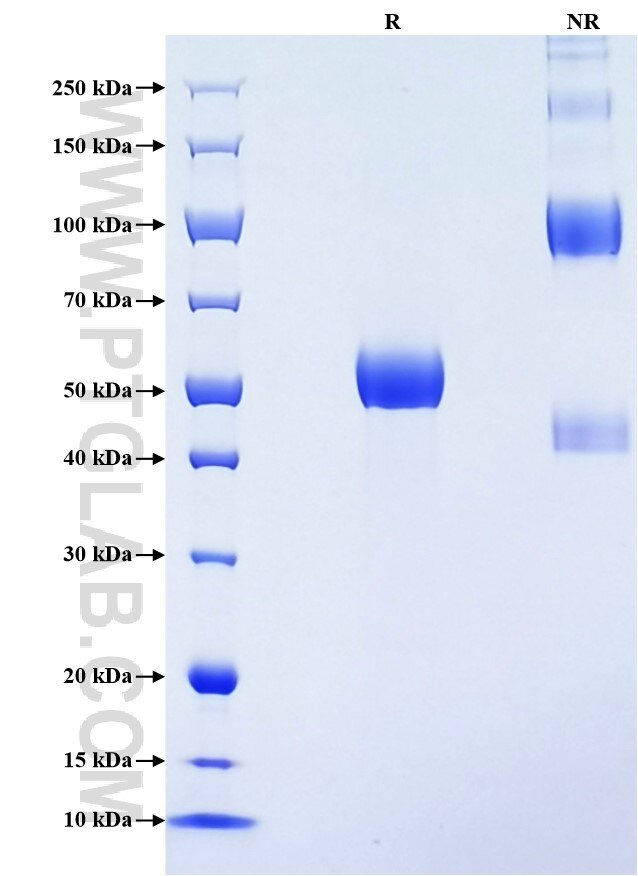Recombinant Rat RANK/TNFRSF11A protein (rFc Tag)
Species
Rat
Purity
>90 %, SDS-PAGE
Tag
rFc Tag
Activity
not tested
Cat no : Eg3285
Validation Data Gallery
Product Information
| Purity | >90 %, SDS-PAGE |
| Endotoxin | <0.1 EU/μg protein, LAL method |
| Activity |
Not tested |
| Expression | HEK293-derived Rat RANK protein Val31-Gln209 (Accession# F1M8Z6) with a rabbit IgG Fc tag at the C-terminus. |
| GeneID | 498206 |
| Accession | F1M8Z6 |
| PredictedSize | 45.9 kDa |
| SDS-PAGE | 48-60 kDa, reducing (R) conditions |
| Formulation | Lyophilized from 0.22 μm filtered solution in PBS, pH 7.4. Normally 5% trehalose and 5% mannitol are added as protectants before lyophilization. |
| Reconstitution | Briefly centrifuge the tube before opening. Reconstitute at 0.1-0.5 mg/mL in sterile water. |
| Storage Conditions |
It is recommended that the protein be aliquoted for optimal storage. Avoid repeated freeze-thaw cycles.
|
| Shipping | The product is shipped at ambient temperature. Upon receipt, store it immediately at the recommended temperature. |
Background
TNFRSF11A (tumor necrosis factor receptor superfamily, member 11A), also known as receptor activator of NF-κB (RANK), is highly expressed in bone and has an important role in osteoclast differentiation and activity. Tnfrsf11a deficiency in mice has also been associated with severe abnormalities in thymic epithelial cells and impaired negative selection, with severe autoimmune manifestations. Overexpression of RANK/TNFRSF11A in glioblastoma cell lines leads to a significant reduction in focus formation and elevated apoptotic activity.
References:
1. Hughes A.E., et al. (2000). Nat Genet. Jan;24(1):45-48. 2. von dem Knesebeck A, et al. (2012). Neoplasia. Jun;14(6):526-34. 3. Guerrini M.M., et al. (2008). Am J Hum Genet. Jul;83(1):64-76.
